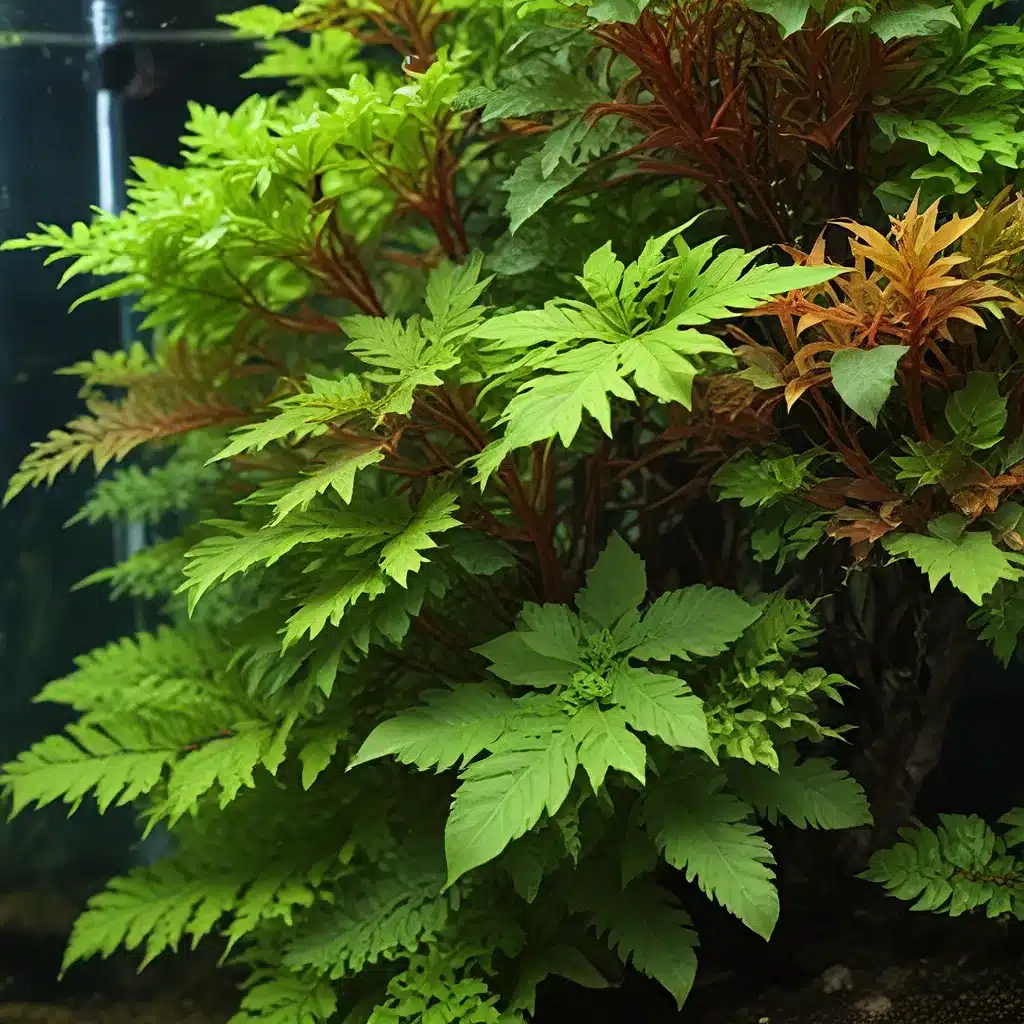
Identifying and Resolving Nutrient Imbalances for Lush, Thriving Aquatic Plants
Maintaining a thriving, verdant aquarium ecosystem is a delicate balance, and one of the key factors to consider is the nutritional needs of your aquatic plants. When plants experience nutrient deficiencies, it can lead to a cascade of issues, from stunted growth and discoloration to the proliferation of unsightly algae. As an experienced aquarist, understanding the signs of nutrient imbalances and how to effectively address them is essential for creating a captivating, healthy aquatic environment.
Understanding the Importance of Balanced Nutrients
Aquatic plants, much like their terrestrial counterparts, require a specific blend of essential nutrients to thrive. These include macronutrients such as nitrogen, phosphorus, and potassium, as well as micronutrients like iron, calcium, and magnesium. When any of these vital elements are in short supply, the plants will exhibit characteristic deficiency symptoms, signaling a need for intervention.
Maintaining the ideal nutrient levels in your aquarium can be a delicate balancing act. Factors such as water chemistry, lighting, and plant species can all influence the availability and uptake of these essential compounds. By closely monitoring your plants and proactively addressing any imbalances, you can ensure your aquatic oasis remains vibrant, healthy, and aesthetically pleasing.
Diagnosing Nutrient Deficiencies
One of the most effective ways to identify nutrient deficiencies in your aquarium plants is to closely observe their appearance and growth patterns. Each type of nutrient deficiency presents distinct visual cues that can help you pinpoint the underlying issue.
Iron Deficiency: New growth appears dull and yellowed, while the leaf veins remain green, distinguishing it from other deficiencies. Iron is essential for the production of chlorophyll, and a lack of this vital mineral can severely impair a plant’s ability to photosynthesize.
Nitrogen Deficiency: Older leaves may begin to yellow or whiten, while new growth becomes stunted and sparse. Nitrogen is a crucial macronutrient for overall plant vigor and development.
Phosphorus Deficiency: Leaves may start to fade in color or take on a darker hue, and the growth of the plant may slow down. Phosphorus plays a vital role in energy transfer and root development.
Potassium Deficiency: Distinctive dark spots or holes may begin to appear on the leaves, eventually leading to their deterioration. Potassium is essential for proper cell function and disease resistance.
Magnesium Deficiency: Leaves may develop a similar appearance to iron deficiency, with pale foliage and darkened veins. Magnesium is necessary for chlorophyll production and enzyme activation.
By closely monitoring your aquarium plants and recognizing these telltale signs, you can quickly diagnose any nutrient imbalances and take the necessary steps to restore the optimal conditions for their growth and vitality.
Addressing Nutrient Deficiencies
Once you’ve identified the specific nutrient deficiency affecting your aquarium plants, the next step is to implement a targeted treatment plan. This may involve supplementing your aquarium’s water column with specialized fertilizers or adjusting the overall balance of nutrients present.
Iron Supplementation: Adding liquid iron supplements or chelated iron products to your aquarium water can help remedy an iron deficiency. The ideal iron level for a planted aquarium is between 0.1-0.5 mg/L.
Nitrogen and Phosphorus Management: Maintaining appropriate levels of these macronutrients, often through the use of comprehensive liquid fertilizers, can ensure your plants receive the essential building blocks they need to thrive.
Potassium Supplementation: Dedicated potassium-based supplements or products containing potassium sulfate can help address deficiencies and support proper cell function and disease resistance.
Magnesium Enrichment: In cases of softened or low-mineral water, adding specialized remineralizing salts can help restore the necessary magnesium levels for healthy plant growth.
It’s important to note that the specific treatment approach may vary depending on the unique characteristics of your aquarium, such as water parameters, plant species, and existing nutrient levels. Consulting with experienced aquarists or seeking guidance from reliable online resources can help you develop a tailored plan to address any nutrient imbalances in your aquatic ecosystem.
Maintaining Nutrient Balance Through Proactive Care
While addressing active nutrient deficiencies is crucial, a well-rounded approach to aquarium maintenance can help prevent such issues from arising in the first place. Regularly testing your water parameters, providing appropriate lighting, and implementing a balanced fertilization regimen are all essential steps in maintaining a healthy, thriving aquatic environment.
At King Aquarium, we understand the importance of creating a vibrant, sustainable aquarium ecosystem. By incorporating the latest industry insights and leveraging our expertise, we empower aquarists to diagnose and resolve nutrient deficiencies, ensuring their aquatic plants remain lush, vibrant, and visually stunning.
Remember, the key to a successful planted aquarium lies in understanding the delicate balance of nutrients and proactively addressing any imbalances that may arise. With the right knowledge and a commitment to ongoing care, you can cultivate a captivating underwater oasis that will inspire and delight aquarium enthusiasts for years to come.

